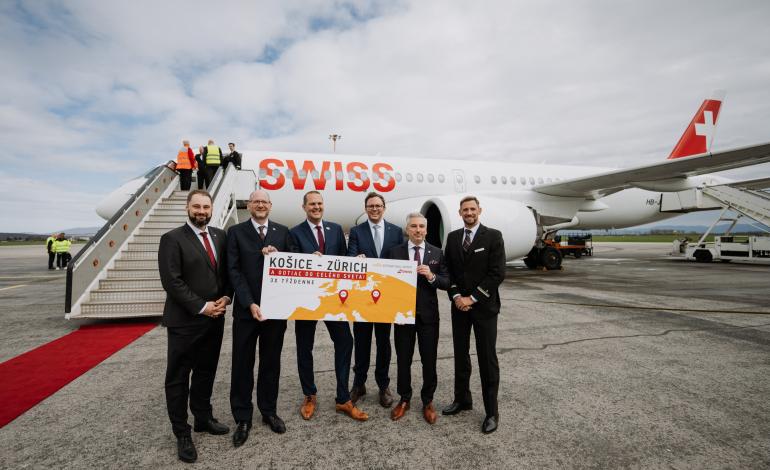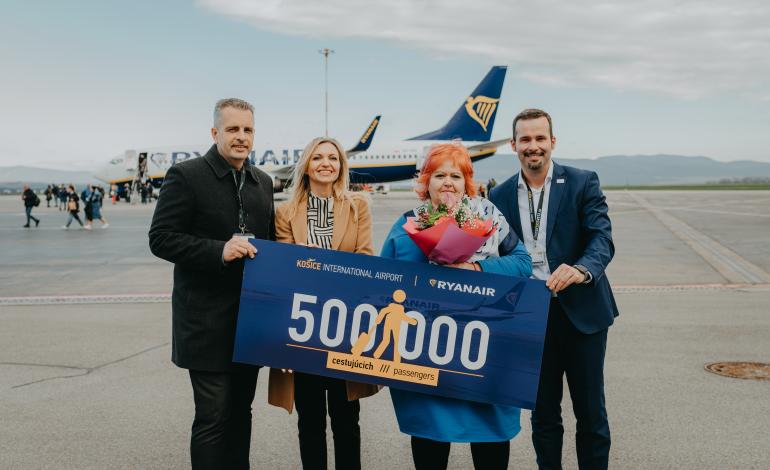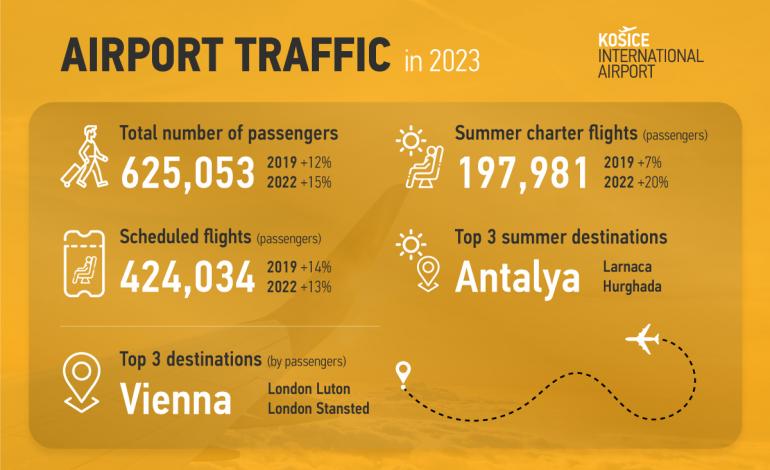Security control
Before entering the aircraft, each passenger must undergo a security check. Security personnel have special training for their work protecting lives and health of passengers.
ACT 143 of 2 April 1998 on Civil Aviation (Aviation Act) and on Amendments to Certain Acts in Section 36 stipulates “Obligation” to submit to screening
1. In the interest of the protection of civil aviation against acts of unlawful interference, persons participating in air transport are obliged to submit to personal control and control of transported goods according to the requirements of persons performing this control (§ 34 para. 2).
2. Interested parties who refuse to submit to the checks referred to in paragraph 1 shall be excluded from carriage by air without the right to a refund of the fare or carriage charge.
The security check consists of two parts:
- Checking hold luggage.
- Checking carry-on luggage and the passenger.
Checking hold luggage:
This begins after the passenger has checked in for the flight at the check-in desk and handed over the luggage to travel in the hold of the aircraft. After it is handed over, the hold luggage is transferred along the conveyor to a special X-ray device where a security staff member performs a check. The luggage must not contain prohibited articles for hold luggage!
Checking carry-on luggage and the passenger:
After registering at the check-in desk, passengers entering the departure hall go through a security check using X-ray equipment and a check of hand luggage. Luggage is checked by X-ray and passengers must pass through a metal detector and then be further checked by touch. The rule is that passengers are check by persons of the same sex, as physical contact occurs in accordance with the prescriptions of the Office of Aviation. Passengers must remove their shoes upon request and footwear will be checked in the same manner as hand luggage. Passengers may not have items from the forbidden list in the their luggage.
Warning, transportation of liquids!
Warning: Passengers with pacemakers are required to alert security staff to this fact and not to pass through the metal detector.
Safety checks are mandatory for all passengers. Refusal of security checks by the passenger results in the exclusion of the passenger from the flight.
List of items forbidden in hold luggage explosives and devices that can cause serious injury or present a threat to the safety of the aircraft, including:
- ammunition,
- blasting caps,
- detonators and fuses,
- mines, grenades and other explosive military stores,
- fireworks and other pyrotechnics,
- smoke-generating canisters and smoke-generating cartridges,
- dynamite, gunpowder and plastic explosives.
List of items forbidden in hand luggage:
a.) guns, firearms and other devices that discharge projectiles (devices capable, or appearing capable, of being used to cause serious injury by discharging a projectile), including:
- firearms of all types, such as pistols, revolvers, rifles, shotguns,
- toy guns, replicas and imitation firearms capable of being mistaken for real weapons,
- component parts of firearms, excluding telescopic sights,
- compressed air and CO2 guns, such as pistols, pellet guns, rifles and ball bearing guns,
- signal flare pistols and starter pistols,
- bows, cross bows and arrows,
- harpoon guns and spear guns,
- slingshots and catapults;
b.) stunning devices (devices designed specifically to stun or immobilise), including:
- devices for shocking, such as stun guns, tasers and stun batons,
- animal stunners and animal killers,
- disabling and incapacitating chemicals, gases and sprays, such as mace, pepper sprays, capsicum sprays, tear gas, acid sprays and animal repellent sprays;
c.) objects with a sharp point or sharp edge (objects with a sharp point or sharp edge capable of being used to cause serious injury), including:
- items designed for chopping, such as axes, hatchets and cleavers
- ice axes and ice picks,
- razor blades,
- box cutters,
- knives with blades of more than 6 cm,
- scissors with blades of more than 6 cm as measured from the fulcrum,
- martial arts equipment with a sharp point or sharp edge,
- swords and sabres,
- hiking (trekking) poles,
- skates;
d.) workmen’s tools (tools capable of being used either to cause serious injury or to threaten the safety of aircraft), including:
- crowbars,
- drills and drill bits, including cordless portable power drills,
- tools with a blade or a shaft of more than 6 cm capable of use as a weapon, such as screwdrivers and chisels,
- saws, including cordless portable power saws,
- blowtorches,
- bolt guns and nail guns;
e.) blunt instruments (objects and sports articles capable of being used to cause serious injury when used to hit), including:
- baseball and softball bats,
- tennis rackets (or similar sports equipment),
- clubs and batons, such as billy clubs, blackjacks and night sticks,
- martial arts equipment,
- scooters, snowboards, skateboards, roller skates (or similar sports equipment);
f.) explosives and incendiary substances and devices (explosives and incendiary substances and devices capable, or appearing capable, of being used to cause serious injury or to pose a threat to the safety of aircraft), including:
- ammunition,
- blasting caps,
- detonators and fuses,
- replica or imitation explosive devices,
- mines, grenades and other explosive military stores,
- fireworks and other pyrotechnics,
- smoke-generating canisters and smoke-generating cartridges,
- dynamite, gunpowder and plastic explosives.
Transportation of liquids - rules.
New security rules govern the quantities of liquids which the passenger may carry through the security check. The rules apply to all passengers whose point of departure is within the EU, regardless of their final destination. Security staff will search the passenger and their bag for items prohibited from carry on luggage and for liquids. The new rules came into effect on Monday 6 November 2006 and are valid until further notice at all airports in the European Union.
These liquids must be in individual containers with a maximum capacity of 100 millilitres each. You must pack these containers in a transparent, re-sealable plastic bag of not more than one litre capacity with a maximum of one bag per passenger.
For the purpose of this new regulation, liquids are understood as meaning:
- water and other drinks, soups, syrups,
- creams, lotions and oils,
- perfumes,
- sprays,
- gels, including shampoo and tanning aids,
- pressurised containers, including shaving foam, hardeners
- deodorants
- pastes, including toothpastes
- liquid-solid mixtures - for example: butter, salads, mustard, ketchup, nutella, honey, spreads, etc.
Do not forget that:
- you can pack liquids in bags that you check in – the new rules only affect hand luggage,
- you can carry in your hand luggage prescribed medicines which you need to use during the trip. If you are travelling with medical supplies, insulin pens or injections, it is recommended (not mandatory) to present a certificate from your doctor at the security checkpoint confirming the necessity of their use. It is also recommended to have them translated into English for the return security check.
- you may also carry dietary preparations including baby food in a quantity essential during the flight. You may be requested to verify they are not harmful.
Shopping at the airport:
You can still purchase liquids and gels in shops located after the passport control, boarding card and security checks (the security restricted area or SRA). Liquids and gels that you buy after the ticket and/or passport control or on board will be packed and sealed with the receipt for you by the shop.
There is no quantity limit for purchases in the SRA. Wait before you open the bag until you pass the final security check at your last EU airport of transit.
What can you take with you and how?
- All liquids, gels, pastes and items of similar consistency, which must be in a transparent, re-sealable plastic bag of not more than one litre capacity with the volume of an individual containers of 100 millilitres each.
- Items essential for health reasons during the flight, such as medicines, baby food or dietary preparations.
- Drinks, perfumes, other liquids purchased in the SRA zone of the airport, sealed with the receipt into transparent plastic bags.
All other liquids and gels must be in hold luggage.
Nedávno pridané


